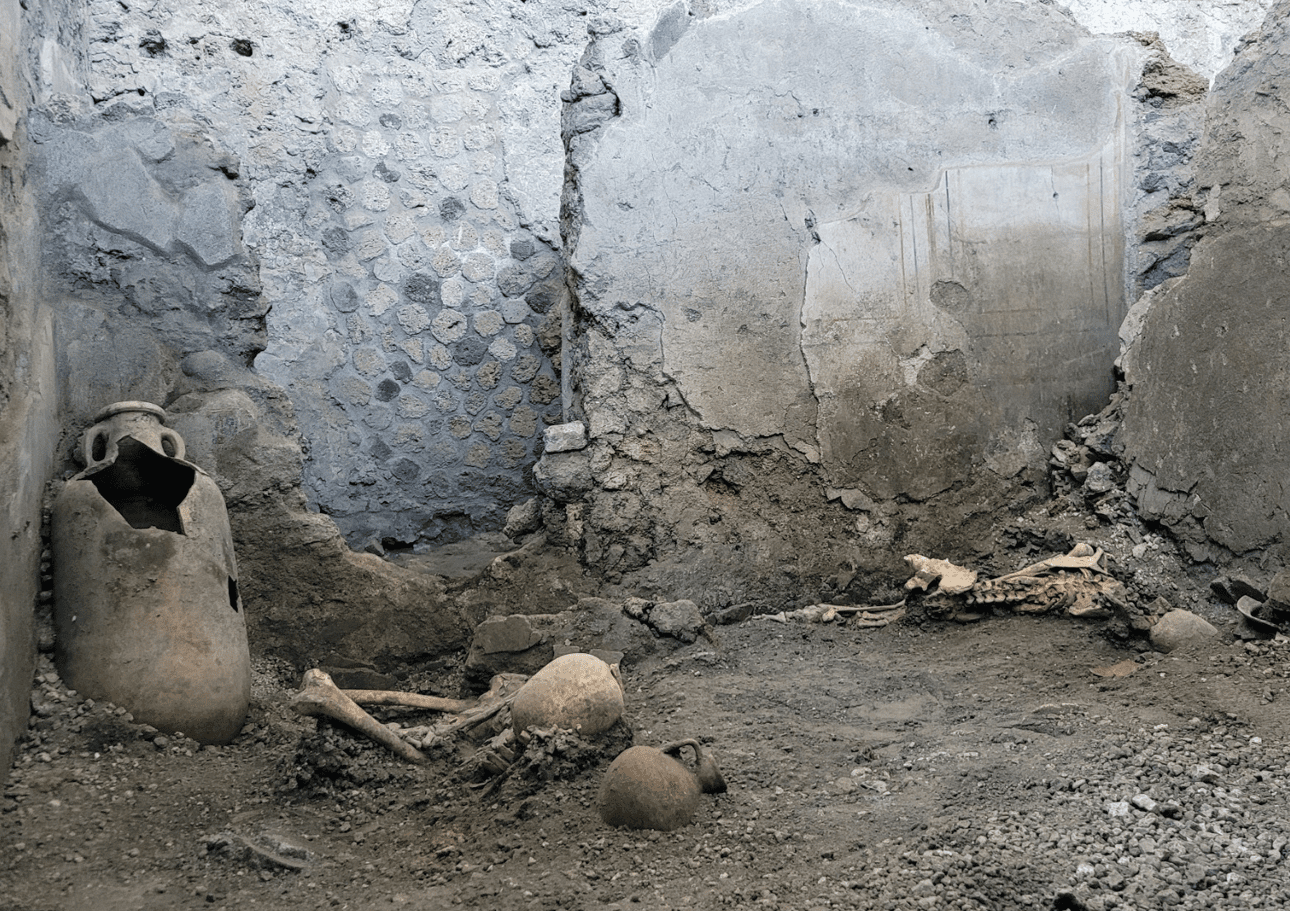Two new skeletons of men who perished at Pompeii have been uncovered, adding to the victims of the fateful Vesuvius eruption. Found crushed underneath an ancient Roman wall, it looks like this pair died as a result of the accompanying earthquakes that rocked the city as the volcanic hellstorm raged.
The latest two victims were discovered during recent excavations of the Insula dei Casti Amanti at the Pompeii Archaeological Park, just south of Naples on the Italian coast. They were found under what is thought to be a wall that collapsed due to an eruption-related earthquake.
Archeologists on the project believe the skeletons belonged to two male individuals aged at least 55 years old. Alongside their bones were a small collection of artifacts, including bronze and silver coins, as well as five glassy objects that were perhaps beads on a necklace. They also found traces of organic material, which they suspect was a bundle of cloth.
We can only imagine the story behind this pair – friends, brothers, colleagues, or lovers – but we do know a little about their tragic death. The researchers suspect that they died side by side from trauma due to the powerful earthquakes that accompanied the devastating volcanic eruption.
The victims, found side by side, appear to have died together. Image courtesy of Pompeii Archaeological Park
The ancient Roman city of Pompeii was decimated in 79 CE when the volcano Mount Vesuvius erupted, killing thousands of people in the city and nearby settlements of Herculaneum, Oplontis, and Stabiae.
Researchers now think the notorious eruption started in the morning following a series of small tremors that went largely unnoticed by the locals. Around lunchtime came the Plinian phase when a giant eruptive column formed, ejecting volcanic rock and hot gases high into the stratosphere.
In turn, this debris eventually fell to the ground below, bombarding the buildings for hours like the shelling of a war-torn city. Throughout this, earthquakes shook the city, contributing to the fatalities.
Following this initial Plinian phase, a series of pyroclastic currents of rocky deposits flew down the side of the volcano and flooded the city with hot gas and volcanic matter. It’s estimated that at least 15 to 20 percent of the city’s population died during this grueling stage, killing them through asphyxiation by a stream of scorching ash and gas.
After around two days of violent volcanic activity, the debris had totally engulfed the city and its inhabitants, leaving them covered in a huge mound of debris that lay undisturbed for over 1,000 years.
Beyond forensic volcanology, the researchers wanted to stress how the latest discovery sheds light on the human dimension of the tragedy – something that is all too often forgotten when looking at ancient remains.
“Modern excavation techniques help us to better understand the hell that completely destroyed the city of Pompeii in two days, killing many inhabitants: children, women, and men. With analyses and methodologies, we are able to get closer to the last moments of those who lost their life,” said Gabriel Zuchtriegel, Director of the Pompeii Archaeological Park, in a statement sent to IFLScience.
“During the recovery of the two skeletons, one of the archaeologists pointed to the victims we were excavating and said a sentence that has stuck with me – and that perhaps summarizes the history of Pompeii – when he declared: ‘this is us’,” added Zuchtriegel. “At Pompeii, the advancement of techniques never makes us forget the human dimension of the tragedy, rather it makes us see it more clearly.”
Source Link: Two New Victims Of Vesuvius Crushed By Falling Wall Discovered at Pompeii
